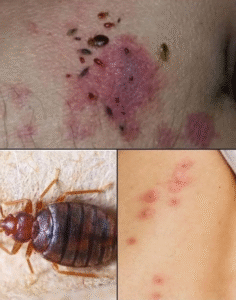Understanding Scabies (500 words)
Scabies is a highly contagious skin condition caused by an infestation of the Sarcoptes scabiei mite. These microscopic mites burrow into the top layer of human skin, where they live and lay eggs. The body reacts to the presence of the mites, their eggs, and their waste, which leads to intense itching and a rash. Scabies can affect people of all ages and socioeconomic backgrounds, and it spreads easily through close personal contact, including skin-to-skin touch or by sharing clothing, bedding, or towels.
One of the most recognizable symptoms of scabies is severe itching, especially at night. This itch is often accompanied by a pimple-like rash, red bumps, or small blisters. Common areas affected include the hands (especially between the fingers), wrists, elbows, waistline, buttocks, and genitals. In infants and young children, the scalp, face, palms, and soles of the feet can also be involved.
Scabies is not a result of poor hygiene. Even very clean individuals can get scabies through close contact with an infected person. Outbreaks commonly occur in crowded places such as nursing homes, prisons, schools, and childcare centers, where close interactions are frequent.
The incubation period for scabies can range from 2 to 6 weeks in people who are infested for the first time. During this time, the mites can be spread to others, even before symptoms appear. However, if a person has had scabies before, symptoms may develop more quickly—within a few days—due to prior sensitivity.
Diagnosis is typically made based on clinical signs and symptoms. In some cases, a doctor may perform a skin scraping, where a small sample of skin is examined under a microscope to confirm the presence of mites, eggs, or mite feces.
Scabies is treated with prescription medications called scabicides, which kill the mites and their eggs. The most commonly used treatment is permethrin cream, which is applied to the entire body from the neck down and left on overnight. In some cases, oral medications like ivermectin may be prescribed, especially for crusted (severe) scabies or in institutional outbreaks. It’s crucial for all close contacts of an infected person to be treated at the same time, even if they do not show symptoms, to prevent reinfestation.
In addition to medication, all clothing, bedding, and towels used by the infected person should be washed in hot water and dried on a high-heat setting. Items that cannot be washed can be sealed in plastic bags for at least 72 hours to kill any mites.
Scabies can be emotionally distressing due to the relentless itching and potential for stigma, but it is entirely treatable with proper care. Early recognition and prompt treatment are key to stopping its spread and relieving discomfort. Education about the condition also helps reduce misinformation and prevent unnecessary embarrassment.
By understanding scabies—its causes, symptoms, and treatments—individuals and communities can take appropriate steps to manage and prevent outbreaks effectively. Would you like this turned into a printable
